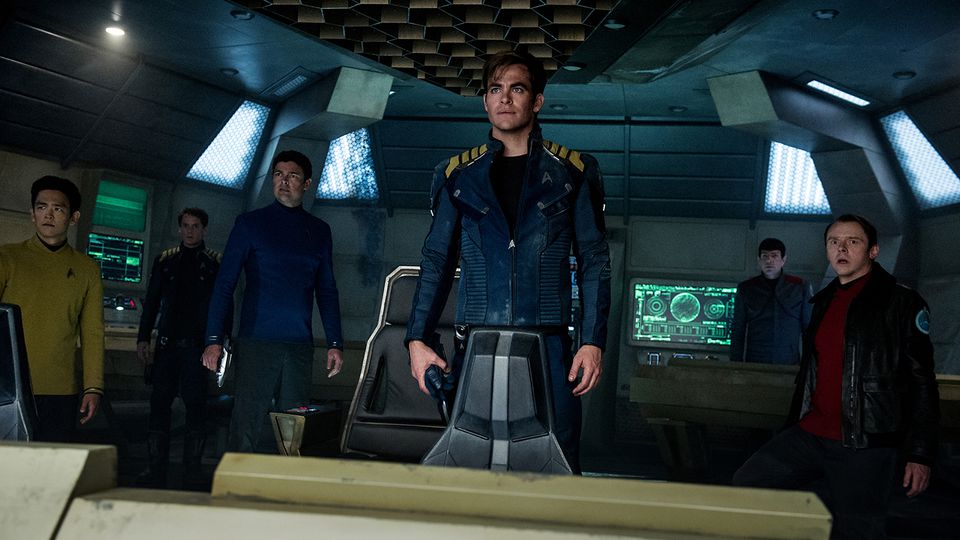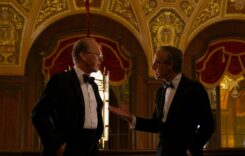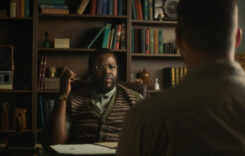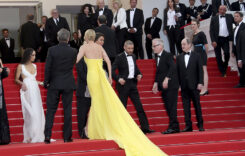AUGUST 10, 2016
“Things are beginning to feel a little episodic,” observes Capt. James T. Kirk (Chris Pine) in an early scene in “Star Trek Beyond,” the latest adventure aboard the USS Enterprise. Yes, it’s a kind of meta commentary on the nature of the “Trek” film series, but having a film feel like a big episode of the TV show is not necessarily a bad thing for moviegoers.
Kirk’s ennui is momentarily lessened by a visit to the starbase Yorktown, where the crew gets some much needed R&R. Sulu (John Cho) reunites with his husband and young daughter, and after breaking up his romance with Uhura (Zoe Saldana), Spock (Zachary Quinto) receives word that Ambassador Spock (the late Leonard Nimoy) has died. Kirk, meanwhile, meets with Commander Paris (Shohreh Aghdashloo) to apply for a desk-bound job as Vice-Admiral, the commander of the Yorktown starbase, and he recommends Spock to take over his job as Captain of the Enterprise.
Their respite quickly ends when a distress call comes through, and Kirk leads his crew on yet another rescue mission. It turns out to be an ambush, however, when the Enterprise is attacked by a huge swarm of small ships and is in the process of coming apart. The leader of the ambush, the vengeful Krall (Idris Elba, under 20 pounds of makeup) lands on the ship in search of a doodad called an Abronath, which he desperately wants but is unable to find. Krall then captures those crew members, including Sulu and Uhura, who hadn’t been able to leave the ship via an escape pod.
Doesn’t this feel like any episode of the TV series, just on a humongous budget? But those episodes were damned entertaining, and so is “Star Trek Beyond,” no matter how much it cost or how inconsequential it ultimately is.
As in any long-running TV series, the cast’s performances by now are pretty much set. Pine is a blue-eyed embodiment of determination as Kirk; Quinto is a terrific Spock, suggesting elements of Nimoy’s original performance without being a slavish imitation; Karl Urban’s slow burns as Bones are particularly funny, especially in his many scenes here with his nemesis Spock; Simon’s Pegg’s Scotty is as animated as ever, and though Saldana as Uhura and Cho as Sulu are fine, their performances would have been more effective if they were given more to do. Though he’s quite good as Chekov, it is a little sad at times to see the promising actor Anton Yelchin, who was killed in June in a freak accident, in one of his final performances.
The one newcomer to the group is Sofia Boutella as Jaylah, a zebra-striped scavenger who has escaped from Krall’s grasp and is able to help Scotty reunite with his colleagues after the Enterprise is destroyed. Boutella is a welcome presence in the Star Trek world, and from the film’s conclusion, it looks like we may be seeing more of her in the years to come.
My only acting quibble is with the casting of such a fine actor as Idris Elba, whose facial expressiveness is key to his performances, buried under all this makeup as Krall. Yes, his voice does exude menace, which is appropriate to who Krall is, but so much characterization is lost when he’s wearing all that glop. It’s only at the film’s conclusion where the mask is gone that Elba is able to exercise his full talent, but by that time, it’s too little too late.
The other big question about “Star Trek Beyond” was the replacement of J.J. Abrams, who guided the first two episodes of the reboot, with action director Justin Lin (“Fast and the Furious” 3-6). Abrams was known as a character-driven director, which helped to give the rebooted franchise some extra depth, whereas Lin is known for his breathtaking car chases. Lin does just fine with the character pieces — there’s a particularly effective scene where Kirk confides his insecurities in a conversation with Bones over a glass of whiskey that’s top notch. But ironically, it’s in the action scenes where Lin falls down — Krall’s initial attack on the Enterprise is a bit of a mess, as Lin never makes it clear who’s where in the chaos, something that Paul Greengrass did much better in “Jason Bourne.”
Is “Star Trek Beyond” a must-see? No. But is it a fun night at the movies? Definitely.
One final technical note. I happened to see “Star Trek Beyond” in a theater in Cathedral City, CA in one of only 30 cinemas around the world that is equipped to show the film in a new process called Barco Escape. This process consists of one main screen where the entire film is screened and a left & right screen where, at various moments in the film, the images expand to surround you with one fluid image in the action. Does it work? Sometimes. Granted, there are moments when the visible seams between the screens don’t exactly line up, and the images on the left and right screens going off and on is at times distracting. But it does offer an extra immersive experience that might be very appealing to moviegoers, particularly for widescreen blockbusters. Let’s see where it goes from here.
GRADE: B












